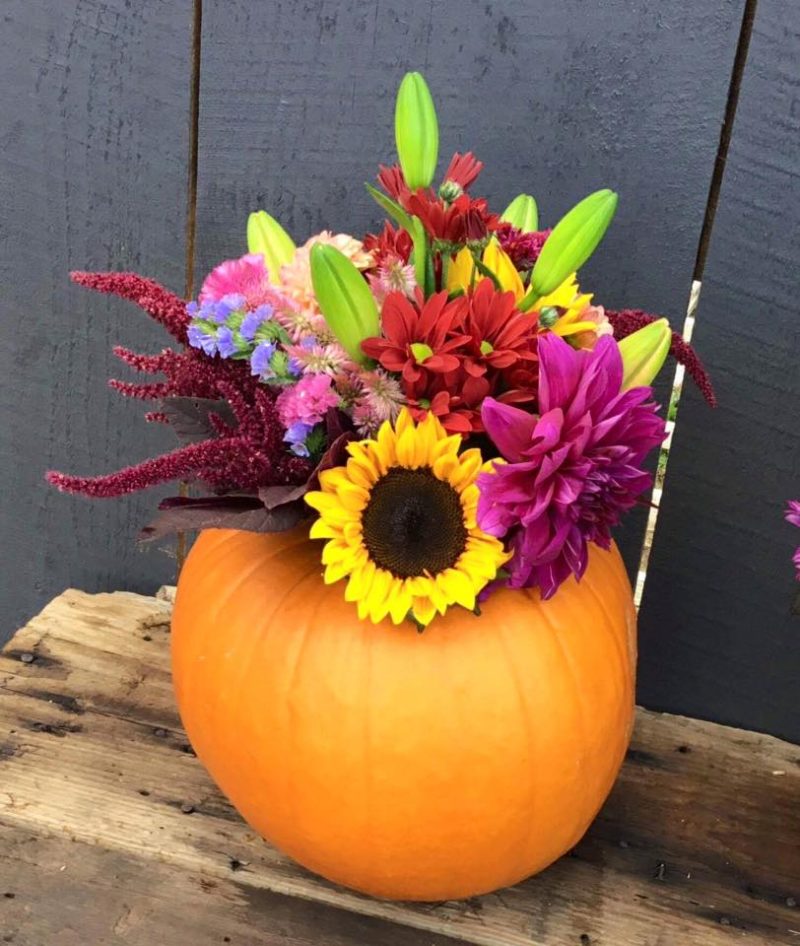It’s Still Just Dirt, The Tillsonburg News – August 2018
by Angela Lassam
Now is the time to prepare all the excess produce we have grown to be used in the winter. Canning and preserving was a mammoth task in years past. It filled many kitchens with smells and heat with all surfaces covered with jars filled with fruit and vegetables.
Today it is much easier to store fruit and vegetables. For fruit freeze drying is one of the best ways. Simply clean, allow to dry after washing and bag them. Remove all excess air out by suction before storing in a freezer. Jams can be made at a later time. Fruit at any time can be taken from a freezer and added to ice cream as dessert or made into pies easily even using store purchased pie shells.
Vegetables appear to need more time to prepare but are well worth the effort. Most root vegetables will do well for several months after harvest. Potatoes only need to be placed in fresh air and allowed to be completely dry before handling. Rub all the dirt off and discard any damaged potatoes. Store the good potatoes in brown paper bags or bushel baskets covered to keep dark. Place in a cool place below 15 degrees C. if possible. A garage is a good place if it does not go below the freezing point. Carrots can stay in the ground until freezing temperatures. Then they must be pulled up, laid on newspaper to dry and then rubbed clean. A Rubbermaid tub is ideal for storage. Fill it in layers with carrots and sand or sawdust. Store in the same place as potatoes. Squash must be cut when completely finished growing leaving a small piece of the stem. Allow to dry completely. If there is any moisture on the skin they will rot quickly. A Rubbermaid tub is good to use but do not place the squash too close together and leave the lid off for aeration. I have successfully done this with squash and used them at Christmas time. A string bag is another way to store them and hang it up like other vegetables.
Onions need extra care before they can be stored for use in the winter months. They must be completely finished growing in the garden patch. This can be decided by the spike turning yellow and appearing to dry from the top down. To speed up this process before frost time simply bend the spike a little above the ground. They will quickly dry down and then can be pulled up for storage. Lay them out on dry ground on newspaper to absorb moisture and allow the skins to dry off. I use my garage floor for this. When the green part has dried completely you can cut it off. The onions can then be stored the same way in a string bag to keep them dry and airy.
Lastly tomatoes can be saved for winter use in several ways. Simply wash them and put them in large bags and place in a freezer. In winter you can take out as many as you need and plunge in boiling water. The skins will split and can be easily peeled off even when the flesh is partly frozen. Use them as you would any canned tomatoes for soups, sauces or filler in many casseroles. Alternately freeze tomatoes overnight and plunge in boiling water the next day to remove skins and boil them. Freeze small portions in containers for use in winter.
It is worth the effort to know that the food we will be preparing is our own produce and that no chemicals have been used to promote growth and perfection.
Monthly meetings resume on Tuesday September 4th @ 7.30 p.m. in the Senior Centre Auditorium at the Tillsonburg Community Centre. The topic is Fall Decorating with Hilde Makkink of Sunflower Farm, Tillsonburg who will be demonstrating for us.
A reminder for members that the Grow and Show Flower Competition is at this meeting. Categories can be found in the Tillogram or website. (Participation can be fun!) Everyone welcome. For more information look on Facebook at Tillsonburghorticultural or on the website www.tillsonburghorticultural.ca.
